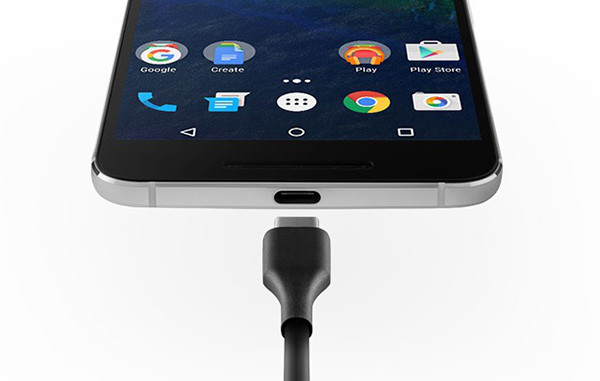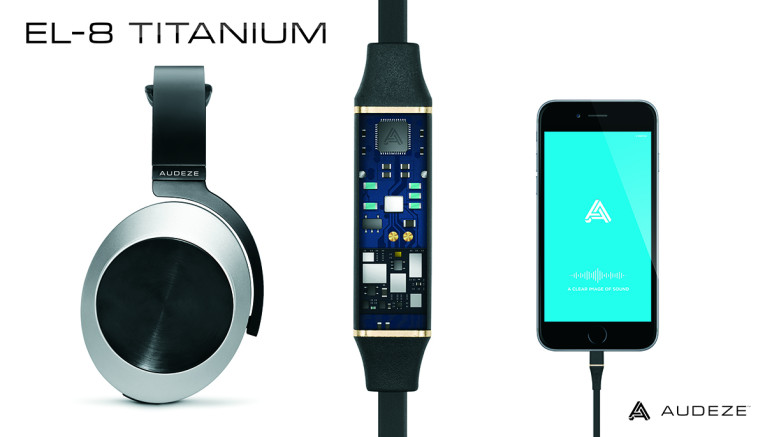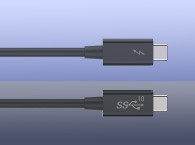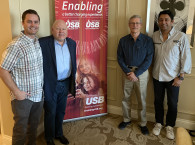
Apple did contribute the technology of its Lightning connector to the USB Implementers Forum (USB IF) and was responsible in great part for the final USB-C connector and specification - which would still be under discussion today if it wasn't for the fact that Cupertino assigned an expanded team of 27 engineers to speed up the process.
Thanks to that, the publication of the USB 3.1 Gen. 2 SuperSpeed 10 Gbps standard was complemented in August 2014 with a new small reversible-plug connector, called USB Type-C, which effectively also replaced the original Thunderbolt connector in the new Thunderbolt 3 specification, the result of a collaborative effort between Intel and Apple.
So, as always, Apple is pushing the envelope - just look at the fact that six months past CES 2016 and despite all the promises from Microsoft and Intel, we are all still waiting for the next generation Thunderbolt 3 computers to be released. As usual, the whole industry waits for Apple to go first...
On the smartphone and tablet front, Apple controls its hardware, software, and even connectors such as Lightning, and that's what makes it possible to have the analog audio jack replaced in iPhones, iPads, and maybe even iPods. In fact, the transition has already started - as we can see from existing headphones (e.g., Audeze's EL8) with Lightning connector.
For all the manufacturers of mobile devices that adopted USB 3.1 and USB Type-C connectors, their implementation efforts depended on the specifications produced by the USB-IF consortium workgroups - which took longer but are now ready. The problem now, is getting everyone involved to agree on how hardware and software will get in sync, which is a problem Apple doesn't have.

During CES 2016 - where everything was about USB-C - all this was explained to audioXpress in a briefing with USB-IF executives, Brad Saunders, Architect Strategist, at Intel Corp. (USB-IF chairman), and Rahman Ismail (CTO) also from Intel, currently leading also the audio aspects of the USB Device Working Group.
Since we are approaching that moment of the year when we can expect some Apple revelations about the iPhone 7 and the alleged "3.5 mm jack conspiracy plot", I thought I should share some part of that USB-IF briefing, where we were looking at some existing USB-C prototypes.
As Brad Saunders explained: "Here we are on a phone and we've got this connector (USB-C) and the one connector still remaining is this guy (the 3.5 mm jack). It's too big! And it's analog! I always highlight the fact that, even though it looks narrow as a connector, it's actually fairly wide, because it's an analog design and you have to isolate things from each other. This is really a monster when it comes to volume! And it is the one thing that it's still controlling the form factor, significantly. At least in the depth direction and its placement.
"So, we have been looking at alternatives to that. We always had USB audio. Unfortunately, the latest and greatest version of USB audio is a 10 year old definition! And... the major OS in the world doesn't even support that one! So, essentially what we did was to look at 'what would you do for digital audio with Type-C?' We looked at all solutions! What Apple does on their phone, what other people do on PCs... all of these things. In the end, we decided we should just focus on making USB audio the best that it can be. It turned out that, if properly implemented, you could have a low enough power solution on USB audio using USB 2, to compete with an analog jack - for playback time between a device in sleep, playing back a stream to an audio device plugged into your ears. Why hadn't we done that in the past? Well, the past was PCs and Skype... you know? That's why.

"Now, there are sophisticated users, and you can do a lot of cool stuff with USB audio. But most of the people only used Skype with USB. So, essentially what we did is we agreed - and when we say we, I mean all the people on the USB Type-C spec team, including the Apple's and Google's and Microsoft's of the world - that we should get together and work with Qualcomm and others on making this a better solution.
"Right now, Rahman is co-chairing the activity to bring the USB spec up to what we call 2.1, and we're making it contemporary. We are updating all the tables with the latest sampling rates and the latest needs, we're looking at all the solutions..."
"Admittedly, we could have probably have started it earlier (...) And by the way, there’s an appendix in the spec about analog audio through this jack and nobody is even trying to implementing it because it’s turning out to be too complex."
Interesting things on the horizon for audio USB, but it looks like this might take some more time. audioXpress will include the full USB-IF interview plus many more details about USB 3.1 Gen 2, Thunderbolt 3, and what this all means for audio in a future Standards Review article. A good reason to make sure you have a subscription of audioXpress is so you can read it first hand!
This article was originally published in The Audio Voice newsletter #83, June 2016.







